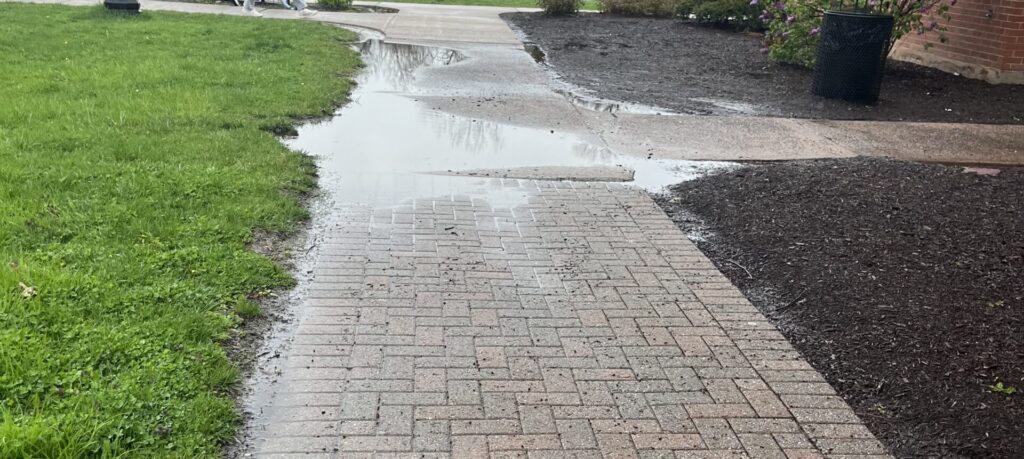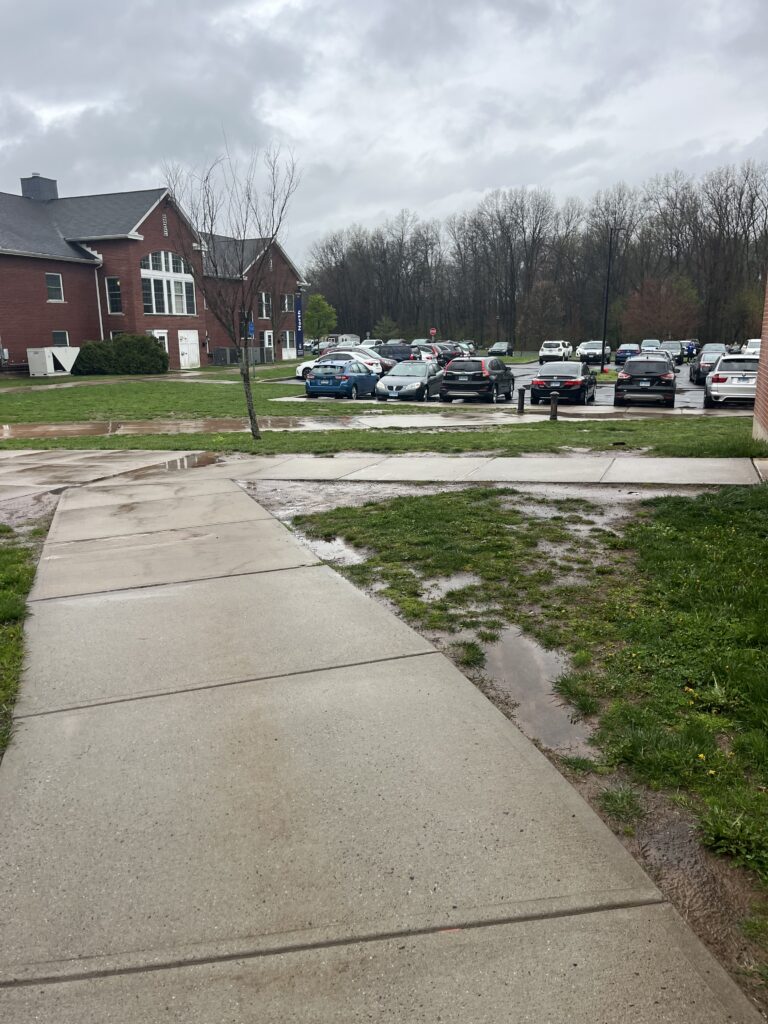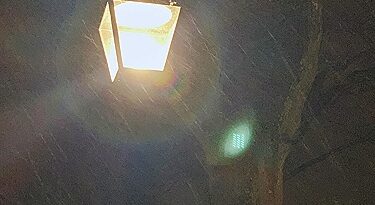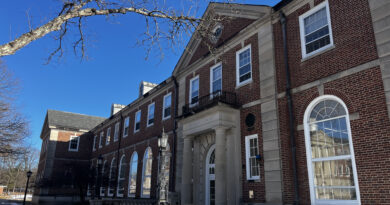Are Campus Puddles Giving the O’Connell Pool Competition?
Written by Jillian Milo
It is no secret that it rains frequently in Connecticut- especially during the months of March-May. Collecting around 4 to 4.5 inches per month during the spring months, as is the average reported by RSS Weather, it is no surprise that puddles form. However, when those puddles prevent dry passage between campus buildings, it causes a problem. When it rains consecutively for a few days, a majority of the sidewalks become flooded in large areas and force the students to choose if they want to deal with squishy socks and muddy shoes, or if they want to simply turn around and cut their losses. Sometimes, the choice is made for them because they have a class in an academic building or they have lift and/or indoor practice that they cannot miss. The most commonly flooded areas include the sidewalk near the “Amando” Amazon delivery box on the way from the quad to the O’Connell building, the sidewalks in front of the McGovern dining hall, the sidewalk in front of the Pope Pius XII library, and the sidewalk leading to the L parking lot towards the back of Assumption, Madonna, and North suite residential buildings.
Because it rains throughout the entire year, it would be beneficial to the student population for this problem to be addressed. It is a relatively simple fix: having the sidewalks redone. The average cost to repave sidewalks ranges from $3-$20 per square foot, according to Forbes Home. The University of Saint Joseph is 90 acres (about 4 million square feet) (not all of which is sidewalks) and the mean cost of sidewalk repaving is $10 per square foot. Assuming maybe 1/8 of the university is sidewalks and parking lots (pavement), the repair cost would only amount to $5 million. While this may seem like a lot of money, the average tuition cost (without room and board) at USJ is around $45,000 per student per year (before financial aid is awarded)₄. So, hypothetically, it would take less than 120 undergraduate students’ tuitions to fix an issue affecting the entire campus of 2,000-2,500 students.
With that perspective, it is clear that USJ should spend less money on manicuring the lawns every day during the warmer months, and instead direct some of its budget to other aspects of the visual aesthetic of the campus. The average time it takes to replace a sidewalk is around a month, so if it is done in sections, there will be minimal interference with USJ’s summer programs as well. With this solution, the beauty and accessibility of campus can be maintained throughout all seasons, not just the warm ones.
Photographs by Jillian Milo





